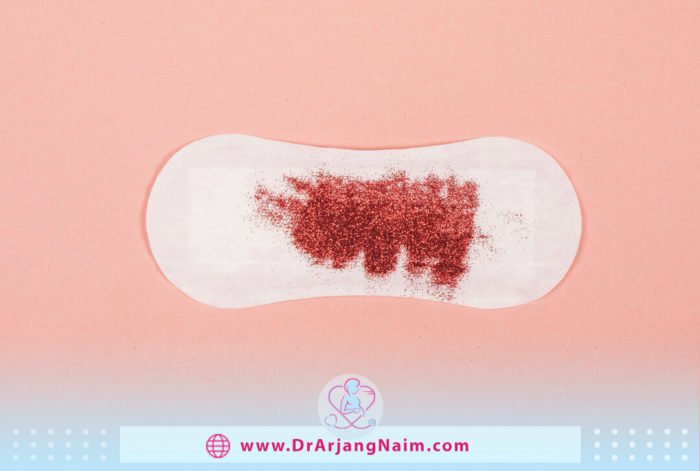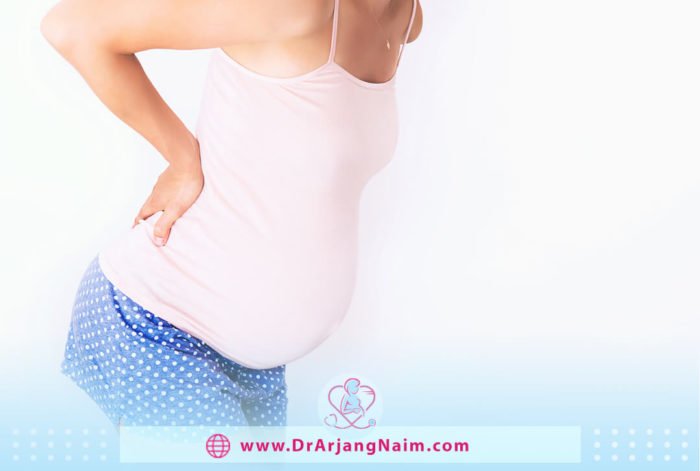Cervical cerclage refers to various methods that use sutures or synthetic tape to strengthen the cervix during pregnancy in women with a history of short cervix. The cervix is the lower part of the uterus that opens to the vaginocervical cerclage can be done vaginally or usually through the abdomen.
If the cervix is at risk of opening before the baby is ready for birth, or in some cases, if the cervix begins to open too soon, the doctor may recommend cervical cerclage. Closure of the cervix causes the fetus to remain inside the mother’s uterus until 37 to 38 weeks of pregnancy.
Types of cervical cerclage
Cervical cerclage or cervix stitch is a surgical procedure in which a doctor physically sutures a woman’s cervix to prevent it from opening. It can be very helpful for pregnant women to prevent miscarriage or premature birth. It may sound scary, but it is the standard treatment for women with cervical disabilities.
McDonald cerclage
The cervix is closed with traditional surgical sutures between 16 and 18 weeks, and the sutures are removed around 37 weeks. This is the most common type of cervix stitch.
Shirodkar cerclage
This method of suturing is done in the wall of the cervix rather than the cervix. This method is more difficult than the McDonald method, but deeper sutures are believed to reduce the risk of infection. This is permanent and will be available for all future pregnancies.
Abdomen cerclage
The cervix closes above the cervix in the abdomen. This is a permanent procedure and is usually done only in cases where conventional cerclage methods are not applicable. This method is usually used when the previous cervical cerclage has failed.
Why is cervical cerclage used?
Cervical cerclage is recommended during pregnancy to prevent preterm delivery if the following are present:
- History of second-trimester pregnancy-related to painless cervical dilatation in the absence of labor or placental abruption
- Previous cerclage due to painless dilation of the cervix in the second trimester
- Painless cervical dilation diagnosed during the second trimester
- A short cervical length before 24 weeks of pregnancy, in a singleton pregnancy
Cervical cerclage is not suitable for all people at risk for preterm birth. the doctor may not recommend in the following cases:
- Active vaginal bleeding
- Active preterm labor
- An intrauterine infection
- Preterm premature rupture of membranes
- Twin or higher-order pregnancy
- A fetal anomaly incompatible with life
- Prolapsed fetal membranes
Preparation
Steps to be done before cerclage include:
- A review of medical history
- Ultrasound: the doctor may order an ultrasound image of the mother’s uterus to check the baby’s health and development.
- Screening for infection: The doctor may take a swab from the cervical mucosa or gently insert a needle into the uterus through the abdomen to take a sample of amniotic fluid (amniocentesis).
- Antibiotics: If there is an infection, antibiotics may be needed. If possible, should finish the treatment before the cervical suture.
During
Before starting, the doctor will prescribe medication to treat the pain. If anesthesia of the area, also called the spinal or epidural, is used, the drug is injected into the back with a needle. General anesthesia is also possible. Surgery is performed either through the vagina or abdomen.
After
The doctor may do another ultrasound to check the baby. Symptoms may occur a few days after surgery. These symptoms include:
- Blood spots on underwear
- Cramps
- Pain when urinating
If the mother has had surgery because of a history of cerclage or if the cervix has begun to open, she may need to stay in the hospital for a while. The mother may need to see a doctor every 1 to 2 weeks to check her cervix until the baby is born.
Before delivery
The doctor removes the cervical stitches before delivery. It is usually done around 37 weeks of pregnancy. If the mother wants more children, it may be possible to hold the cervical stitches in place, but this can make re-pregnancy more difficult. If the stitches are through the abdomen, the doctor will most likely recommend a cesarean section at 37 to 39 weeks. The mother may decide to have the stitches removed during cesarean section.
Risks

Risks associated with cervical cerclage include:
- Vaginal bleeding
- Inflammation of the fetal membranes due to a bacterial infection
- A tear in the cervix
- Preterm premature rupture of the membranes
- Suture displacement
After receiving cervical cerclage, call the doctor immediately if fluid leaks from the vagina, a sign of premature rupture of the membranes. If patients have a premature rupture of the membranes or signs of uterine infection, the doctor may recommend that remove the cervical cerclage prematurely.
When is it done?
If the doctor recommends cervical stitch to a pregnant mother because of problems in a previous pregnancy, it should ideally be done 12 to 14 weeks after pregnancy. Doing this after this period is called an emergency cerclage. If there is an emergency cerclage in a previous pregnancy, she is more likely to need another cerclage if the women become pregnant again. Otherwise, surgery can be performed for up to 24 weeks. After that date, cervical sutures can rupture the amniotic sac and make the baby come too soon.
What are the warning signs of cerclage?

Warning signs of cerclage include:
- Contraction or cramping
- Pain in the lower abdomen similar to labor pains
- Vaginal bleeding
- Fever above 37.5 ° C or chills
- Nausea and vomiting
- Unpleasant vaginal discharge
- Leakage or discharge from the vagina
How long does it take to recover from the cervical cervix stitch?
Each person recovers at a different rate. Depending on the type of procedure, whether vaginal or abdominal and the type of anesthesia, hospitalization can be between one and five days. Other cases include:
- Pregnant mothers should refrain from unnecessary physical activity for two to three days after surgery or as recommended by their doctor.
- In general, sex is avoided until at least 32-34 weeks of pregnancy.
- Follow up at regular weekly or biweekly intervals to check the condition of the cervix.
- If the cervix reopens after surgery, recirculation may be performed.
- The doctor usually removes the cervical sutures at 36-37 weeks of gestation.
The bottom line
Cervical cerclage is a method that prevents the pregnancy from being lost or the premature birth from taking place by suturing the cervix. The cervix is located in the lower part of the uterus, which opens into the vagina.
Cervical cerclage can be done vaginally or, in most cases, through the abdomen. Usually, the stitches open and come out around 37 weeks of pregnancy. The cervix is closed and tight before pregnancy. The cervix gradually softens and shrinks in length during pregnancy and begins to open as labor begins. A weak cervix will soon begin to open, leading to miscarriage. Cerclage is recommended by the doctor when the cervix is at risk of opening or opening prematurely.
Arjang Naim MD examines the cervix with regular examinations for pregnant women and recommends cerclage if there is a possibility that the fetus may be lost due to the opening of the cervix.
Additional questions
1. How successful is cervical cerclage?
Cervical cerclage helps prevent miscarriage or premature birth due to cervical disability. This method is successful in 85 to 90% of cases.
2. Is cervical cerclage a painful procedure?
Before starting, the doctor uses regional anesthesia (spinal or epidural) or general anesthesia to prevent the pregnant mother from feeling pain.
3. How long does cerclage procedure last?
The doctor performs cervical cerclage, also called cervical suture, at the hospital. This procedure usually takes less than an hour. Many pregnant women can go home the same day.
4. What happens after cerclage removal?
Immediately after cerclage, there may be light bleeding and mild cramping that should stop after a few days. Increased vaginal discharge may also occur, which may continue until the end of pregnancy.
5. Can cervical stitches come out?
In cervical cerclage, strong sutures are used to close the cervix during pregnancy to prevent premature birth. Sutures are usually removed in the last month of pregnancy.
References:
https://www.medicinenet.com/what_to_expect_after_cervical_cerclage/article.htm
https://www.mayoclinic.org/tests-procedures/cervical-cerclage/about/pac-20393435
https://my.clevelandclinic.org/health/treatments/17970-cervical-cerclage




